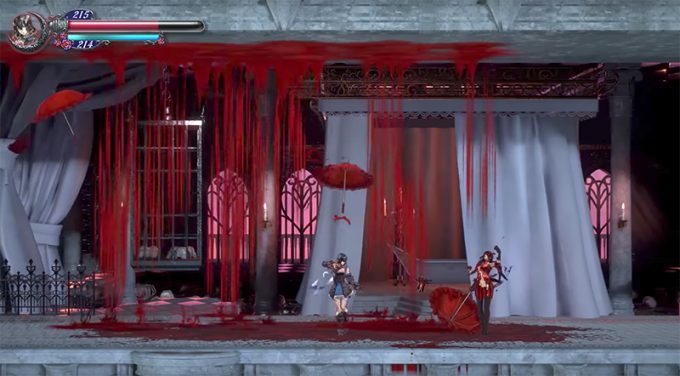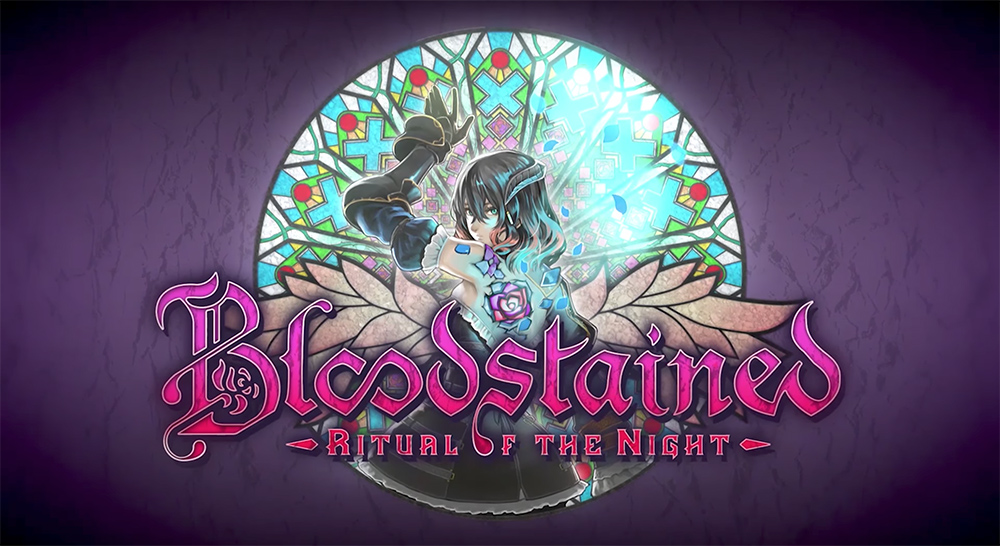You can’t rush good game design. Koji Igarashi knows this, as his development on Bloodstained, the spiritual successor to Castlevania, is focused on moving at a solid but purposeful development pace. He doesn’t want to skip or compromise, instead adding layers of ideas and leveraging his years of experience to make sure those layers fit the game.
Though the premise has been set from the beginning, every time we’ve seen the game a new, important addition has made an appearance. This year at E3, the Shards subsystem made its debut, placing an entirely different set of weapons and skills at our disposal.
The E3 demo takes place in the main cathedral where Miriam, our protagonist, must vanquish the demonic woman in charge. It’s designed with modern gothic flair, as if evil spirit decorators shopped at a swanky downtown Transylvania furniture shop. While there’s the prerequisite candles and stone castle walls, the general aesthetic of the level appears cleaner and lighter, and surprisingly upbeat — a departure from horror genre games. Now, it’s not Disney, but it’s not like being trapped in a dungeon either. It helps that Miriam herself, along with the enemies and the level’s boss, is stylish.
Much like famed 2D series before it, it features a lot of platforming and enemies, backtracking and secrets. Candles can be knocked down, chests unlocked and chandeliers climbed on. It comes off a lot like Castlevania, but because it’s designed in polygons instead of sprites it feels different. With the 2.5D design, jumps aren’t pixel-perfect and attacks aren’t necessarily easy. The difficulty is somehow ratcheted up now that we can’t predict where our attacks or interactions will exactly land. While 8-Bit games are about accuracy, the 2.5D design is more about prediction (and a little luck). Jumps, for instance, feel a bit floaty now that we can’t perfectly anticipate where we’re going to land.

That could all be related to the current in-progress demo, though, as the focus wasn’t on traversal but on showing off the abilities. Shards are acquired by defeating certain enemies or opening specific chests. The giant crystal shard leaps out and stabs us through the chest, signifying that we now have a new ability in us. There will be a large amount of these Shard abilities, divided in the sub-menu by type, but only 4 can be equipped at a time. They’re mapped to the buttons, so remembering which one is where becomes important. Should we want to try a different ability, they can be swapped out in the pause/items screen.
The abilities all all over the place, choosing to be varied enough that they’re all equally effective. One sends out an ape to attack enemies, another launches fireballs directly in front of us or spears at an angle. The fireballs quickly become my favorite, as they can clear a bunch of flying enemies out of my way. The associated ability meter depletes, but can be refilled — I’m lucky I was able to do so right before my boss fight against the demon lady.

As the final demo scene unfolds, the boss is waiting for us in her bathtub, emerging while covered in blood and wearing a nightgown. She attacks us with floating parasols while launching a wave of blood at us; there’s so much blood in this boss fight, I fully understand where the game’s name comes from. We need to jump over the wave and hit her, then avoid her counterattack and focus on the parasols. Her hits are powerful, so using potions becomes second nature. I very nearly run out of the seven or eight I have in inventory, and almost perish if it’s not for the last big of energy I have in the ability meter. As I’m in the air avoiding a blood column, I launch a spear at her, landing what ends up being the final attack.
I win, and the demo is over.
The latest rev of Bloodstained shows a game getting flushed out with details, with meticulous craftsmanship and thought going into every aspect of the level and characters. It feels retro without being retro, and employs principles that make the genre work while rendering them in modern tools. It has a long way to go (it doesn’t launch until 2018) but it could be solid when it gets there.



No Comments